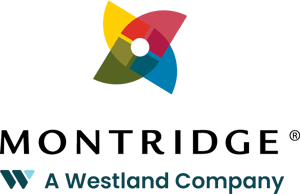The rationale behind pricing group insurance products is simple in theory: Insurance companies set rates to cover claims and expenses and to make a profit. Even non-profit carriers like Blue Cross and Green Shield are also designed to be profitable. However, the specific methods for setting rates are more complex, and understanding them can help you pay less for your group benefits.
Carriers need to consider many factors, such as predicting future claims which can be very challenging with new products (drugs) and services entering the marketplace, the ever-increasing cost of re-insurance to offset possible “major” losses, their predicted future earnings from reserves, just to list a few. In the end, whether the product involves “risk,” such as Life Insurance or is purely a “service” product, such as an Administrative Services Only (ASO) plan, the provider needs to ensure their pricing will cover their claims and/or expenses and return a profit; otherwise, they will not be in business for long.
Understanding How Benefits are Funded Will Help You to Lower Your Rates
In this article, we will discuss Non-Refund Accounting. Other funding methods are Retention Accounting and Administrative Services Only (ASO).
In Non-Refund Accounting, the carrier sets the rates for a period. This is usually 16-36 months for a new group and every 12 months thereafter. The “risk” is on the carrier. Should claims paid (plus the reserve the carrier is required to set aside) outweigh premiums collected, the carrier is in a deficit. The Plan Sponsor (or Employer) is not required to make up the difference. At renewal, the carrier has the opportunity to reset the rates for the upcoming year.
Pooled Benefits: "Low Occurrences" but "High Impact" Cases
In general, these benefits are “low occurrences” but “high impact.” Claims are rare but costly when they do happen – tens to hundreds of thousands of dollars are paid out in these claims. This is “true” insurance, and as such, carriers do not take the claims experience (claims paid versus premium collected) of a Plan Sponsor into consideration when setting rates.
Life Insurance (Dependent and Optional Life) & Accidental Death & Dismemberment
Insurers use life expectancy tables (Mortality Tables) to determine the number of deaths (natural or otherwise) that will occur based on age and gender. These tables have statistics from more than 100 years ago, and outside of a major incident, they can be pretty accurate. Based on all the members under coverage, a carrier can estimate how much in claims they will need to pay out each year, they add in their expenses and profit to determine how much premium they will need to collect.
In general, the cost of this benefit is usually low, in some cases under 1% of the total monthly premium. Adding more and younger employees to the program can limit increases to these rates.
Critical Illness
This benefit is priced the same way as Life Insurance. The major difference is the tables or records of incidents (diagnosis) are not as mature as they are for incidents of death. Also, the advancements in medical diagnosis and treatment have impacted claims for this benefit, earlier detection, and higher survival rates. In relative terms, this is a young product that is still growing, both in terms of the number of participants and the coverage and options offered.
As a result, critical illness claims can be more volatile, leading to greater fluctuations in pricing as the carriers fine-tune their products. Again, adding more and younger employees to your program can help mitigate increases in critical illness rates.

Long-Term Disability
Similar to life and critical illness insurance, carriers can predict the number of disability claims they will have in a year. If they have a short-term disability product, they can use these claims to help forecast claims that will progress to the long-term stage.
It is more challenging to determine the length of a claim. Additionally, insurers must set aside reserves to ensure that there is enough money to pay for a claim until its maximum payout, which can be hundreds of thousands of dollars.
Claims for mental illness and soft tissue disabilities have been increasing, making them challenging to assess. Ongoing support and rehabilitation programs play a key role in helping individuals return to work, which in turn affects the number of paid claims.
Again, adding more and younger employees to the program can help limit increases in long-term disability rates. However, younger males, who are typically higher risk-takers, can work against this theory. Older program participants can also be beneficial. When older employees approach the maximum age, usually around 65, their impact on the program starts to improve as the time they could be on claim drops significantly.
Experience Rated Benefits: "High Occurrences" but "Low Impact" Cases
The occurrence of these benefits is higher and typically has a lower financial impact on a claimant. For example, $300 of Vision Care coverage is minimal when compared to the inability to earn an income. Insurance carriers take into account a Plan Sponsor's claims experience (claims versus premium) when determining their rates. They aim for claims to be approximately 60% to 80% of the premium collected, depending on the benefit and the size of the group.
Inflationary and trend factors are incorporated into the rate calculation and are always pushing rates higher. This can be seen through the addition of new drugs in the marketplace, the increase in the fees charged by service professionals, and the growing support for seeking mental health help (which hasn't always been the case).
Plan Sponsors can help lessen the increases in these rates by reducing the number and amount of claims. This can be achieved by adjusting plan design and educating employees on claiming habits and options.
Short-Term Disability
For most employers between 2 and 50 employees, their short-term disability rate will be based on a combination of their demographics, the insurer's overall experience (or profitability), and a portion of their own claims experience. Some larger employers may have their rates based strictly on their demographics and claims experience. Should claims be higher than expected, rates will increase even with improved demographics. Plan design also impacts rates: lower waiting periods and longer benefit periods are more costly.
Plan Sponsors can help limit increases in short-term disability rates by limiting claims. Fostering a safe, inclusive workplace and culture can help achieve this.
Health Care – Including Vision Care and Travel Insurance
The setting of rates may be influenced by the claims experience of this benefit. For larger companies this impact will be greater than for smaller ones. The plan design design plays a major role in reducing your cost.
To help manage expenses of these mandatory employee benefits, Plan Sponsors can use various cost containment tools to reduce the number of claims. These tools may include deductibles, coinsurance amounts, maximums, and drug formularies.
Another effective way to minimize costs is through Stop Loss insurance, which limits the impact of high individual claim costs on a company's overall claims experience. If, for example, an employee incurs a high-cost drug expense of $75,000 annually, and the Stop Loss insurance is set at $10,000, only $10,000 of the $75,000 in claims made by the employee will be used to calculate the company’s claims experience. Claims for Medical Emergencies while travelling are also excluded in calculating a company’s claims experience, from $1.
The growing use of expensive medications and paramedical services like massage therapy, physiotherapy, chiropractic care, naturopathy, and mental wellness services has led to more employees reaching their Stop Loss limit. This has contributed to an increase in the cost of this vital benefit.
Plan Sponsors are best to investigate where their claims are coming from and use their premium dollars to best set a plan design that is effective for their company.

Prescription Drugs make up a large portion of the Extended Health Care Benefits rate. To keep these costs in check, Plan Sponsors can implement a Drug formulary, such as a Mandatory Generic, which will cover the lowest-cost alternative drug (if there is one). Employees can also help limit claims by purchasing their prescriptions through lower-cost pharmacies such as Costco, Pillway, or possibly a Preferred Provider Network if the carrier has one in place.
Dental Care
Like Health Care, a company's plan design and claims experience have a major impact on the Dental Care rates a carrier charges. Dental Care is broken down into three categories: Basic Services (cleanings, fillings, scaling, check-ups and most extractions), Major Services (crowns, bridges and dentures) and Orthodontic Services (braces). Coverage for these benefits can range anywhere from 100 – 50%, and they all usually have an annual maximum or lifetime maximum in the case of Orthodontics.
Employers can experience spikes in Dental claims, this is often when new members, who were not previously on a Dental plan, are added; retaining employees by reducing turnover can help avoid these spikes. Employees can help limit increases in the Dental rate by maintaining a good standard of oral health.
Employee Assistance Programs (EAP)
EAP is a relatively new product that offers many benefits and covers a vast number of services. A utilization factor is often used to help set rates. Most plan sponsors' utilization has been relatively low (under 20%), and as such, these rates are usually quite stable.
Conclusion
In summary, many factors, internal and external, are used when carriers set prices for their benefits. A group's demographics and claims history can all be factors. As Health and Dental benefits make up most of a plan’s premium, cost containment tools are an important feature to help limit claims and, therefore, costs.
Plan Sponsors are best suited to partner with an experienced benefits adviser and lean on their expertise to design a program that not only meets their and their employees' needs but also helps keep cost increases in check.
Employee education and communication strategy is an important component a benefits advisor can bring to the table, employees are consumers with choices, and they rarely understand how their choices impact claims and, therefore, costs. Employees are bombarded with advertising and promotional features focused on obtaining their benefit dollars, they are often not aware of the options available to them to help reduce their and their employers’ costs.








